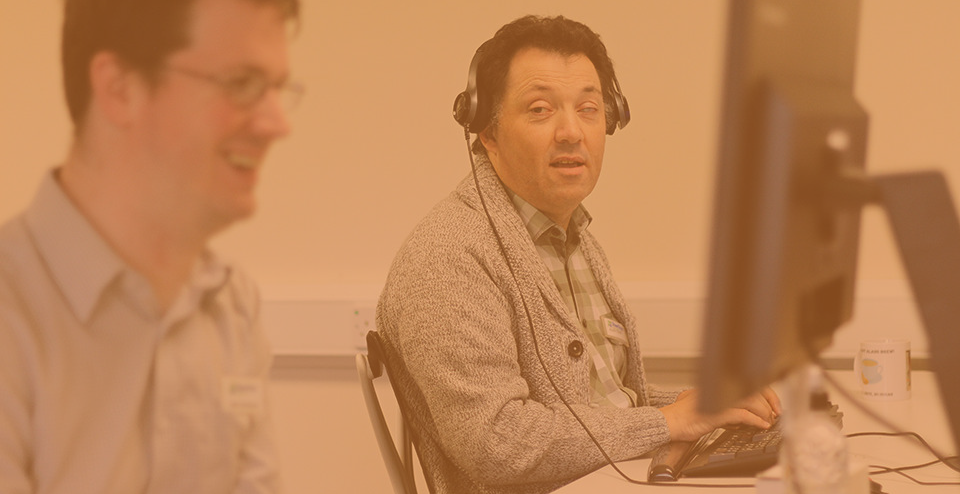With 16% of the world’s population having some form of disability, organisations need to ensure that their digital platforms are inclusive. Accessibility audits can help to achieve this goal, if the right testing procedure is chosen.

Besides starting from scratch and building your website with accessibility at the forefront, website accessibility testing is the best way of ensuring your website meets web standards. However, this outcome depends on what type of accessibility testing methods you undertake. This blog explores the difference between only performing automated software scans and what manual user testing can help bring to fruition.
What is website accessibility audit testing?

We live in a digital age, so it has never been more important for websites and apps to be accessible to everyone. Unfortunately, this is not the case for a large portion of the population. In particular, users of assistive technology face barriers online that can prevent the devices or software that they use from accessing or interacting with a platform. This can strip disabled people of their human rights and shut them out from the online world and its crucial resources.
Performing website accessibility testing on a website can seek out hidden obstacles that may be hindering the user experience or preventing people from gaining access to information and services altogether. This can be achieved through:
- Automated software is used to scan through the coding of a website.
- Performing manual tests to assess both coding and, more importantly, the user experience.
Audits are conducted and assessed against international standards known as Web Content Accessibility Guidelines (WCAG). Many organisations are unaware that the online content and functionality of their sites would fail to meet these web standards. In fact, a recent survey performed automated scans across 1 million influential homepages on the web, and a staggering 95.9% were found to have WCAG 2 failures. Beyond the moral side of matters, this would result in losing custom, a loss of earnings, a damaged reputation, and may run the risk of facing a costly lawsuit.
When should accessibility audit testing take place?

Accessibility audit testing should take place at the beginning of a project and through each iterative design and development stage. Frequent testing can help to eliminate problems fast, issues which might be much harder to address if left until a later stage in the process. This could save you money in the long run, as retrofitting a platform to be inclusive is a lot more time-consuming and will require expert assistance.
This being said, if that ship has already sailed, it’s never too late to try and improve what you have and address underlying problems that may be affecting your online audience.
The main thing is that you are striving to remove digital barriers and put inclusion at the heart of your organisation. And, we applaud you for making that important step!
The benefits of automated testing

The main benefits of performing automated testing across platforms is that it is cost-effective and you gain fast results. This is because many evaluation tools have low-monthly costs or some are free to use, such as browser extensions like WAVE.
Automated testing can be a good starting point for an organisation. Software scans can help you understand the basic accessibility barriers that your website may be presenting to your online visitors.
This form of testing can seek out common accessibility issues such as:
- Missing alt text descriptions on imagery that prevents blind and visually impaired users from understanding what is being portrayed.
- Incorrect heading levels, preventing screen reader or keyboard only users from being able to navigate through your platform.
- A lack of descriptive link text, giving no context to users.
An added bonus is, once you learn why these issues are being flagged, you can start to get into good habits and ensure that these same errors are not implemented into other digital areas, such as on your social media channels or within online documents.
Why manual user testing is vital for getting a true picture of a website’s accessibility

Unfortunately, Passing automated testing checks does not mean your platform is deemed accessible. Automated testing typically flags up only around 30% of errors related to WCAG, which is inadequate. There is also more to testing than just meeting web standards. Having real-life input is the only way to fully assess a website’s usability.
Software alone cannot evaluate things like:
- If content is written in a user-friendly way.
- The web page structure or if it is presented in a logical manner.
- If colour contrast ratios are sufficient on site elements.
- How is alt text written, and does it provide the right detail?
- If captions are included on videos.
- The safety of a platform, such as protecting users from content that may trigger seizures.
- How different user needs can be met through the varying technology they may use.
- All areas of the codebase, such as the correct use of ARIA labels.
When performing manual tests you can utilise assistive technology to see first-hand how items such as screen readers, screen magnifiers, voice assistance, or the use of a keyboard can interact with your platform. This will enable you to quickly gain a deeper understanding about the user experience itself, allowing you to modify and streamline the user-flow.
Basically, manual user testing will ensure that everyone will be able to access and use your digital platforms, no matter what device or software they may use.
Who should you choose to perform your website accessibility audit testing?

Unless you are a developer or expert in the field, you will struggle to perform all manual tests. Therefore, you will need to procure the services of a reputable accessibility specialist.
Everyone accesses and interacts with digital platforms in different ways, and because of this, there is no way to make a “fully accessible website”. So, if anyone promises you this, then you may want to do a little further research into that company as alarm bells should be ringing. The best that we can do is strive to remove as many barriers as we possibly can and gain feedback from the website users themselves, making further adjustments should they arise or new technology emerges.
To get the full picture about your website’s accessibility, it is vital that you seek a company that offers both automated and manual testing.

Here at HeX Productions, we use a three-pronged approach to our audit testing:
- We run automated scans across a website.
- Our experts perform technical reviews of the coding.
- We then work in partnership with a pan-disabled testing team at Shaw Trust Accessibility Services who user-test web content and provide an in-depth analysis of the user experience.
Afterwards, you will receive a comprehensive report of the findings and be presented with live assistive tech demonstrations explaining why the discovered errors are failing web standards. This will provide you with a clear roadmap of required changes to aid you in becoming inclusive.
Further questions about accessibility audit testing
You can learn more about the difference between manual and automated accessibility testing via our web page. If you have any questions about the audit testing process and what it can help you to achieve, please get in touch with our experts.
